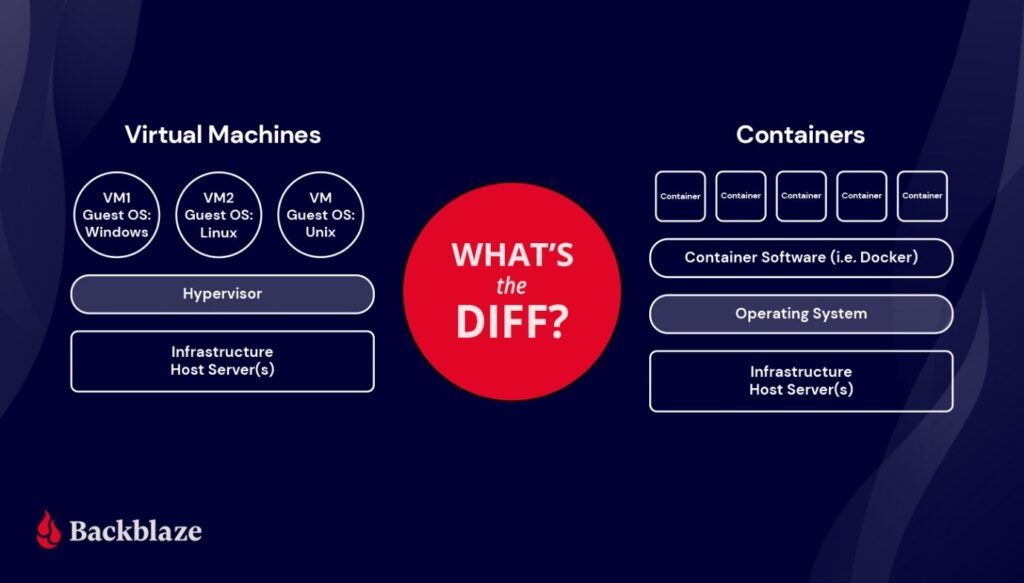
The easiest way to understand virtual machine hosting is a computer within a computer. Current technology and processing power allow for the easy making of virtual computing environments. Within a host computer, you can create different virtual machines.
An operating system that runs off a kernel and that controls all the necessary operations, functions, and access to hardware. They also access the file structure which is full of binary programs and data. With current technology, it is now possible for a computer to share its CPU resources to run an individual kernel and an operating system. Many organizations are now adopting VM hosting to save costs and also make better use of hardware.
On a small scale of a host computer, it can emulate alternative software for different purposes of testing, research, development, or recreation.
What is VM (Virtual Machine) and how does it manage to work?
A physical server that creates and manages virtual machines is known as a hypervisor. A hypervisor uses a portion of hard disk space and allocates memory to run a separate computer within a computer. But why use multiple virtual machines, when you can use a separate computer. Virtualization software saves costs, depending on server resources are allocated.
For example – imagine that you have a dedicated physical computer but you are only using a fraction of the resources. For your main applications, VM architecture can divide one bare metal server into multiple servers. Thus, save costs in the long term.
Are VMs slower than a host computer? Speed can be optimized and it also depends upon how the engineer or the system administrator has allocated all the CPU resources. Proper use of all resources is allocated properly to ensure the capable performance of all VMs.
There are different types of VMs but majorly are of two types. We will be referencing hypervisors of the first type. In which a host computer is segmented to host different virtual machines. For most enterprise cloud computing functions such as – OpenStack project. This is the main type of hypervisor that is being used. Real hardware prices may overcome the prices of multiple VMs.
But this is not the same in every case. Sometimes, the hypervisor is an ordinary desktop computer that is running virtual software. To take an easy instance, software emulation is often used in . With a VM, a can install all the necessary software and run that are designed to run on different platforms. For example – If a user is running Linux operating system but they wants to run Windows , with software emulation through a VM software. VMware workstation or VirtualBox can be a great asset.
Use of VM (Virtual Machine) Hosting
VMs are helpful in a variety of different real-world applications. They are often employed for software development, cloud computing, and data recovery.
Software Development
By designing and managing a virtual environment, developers are able to rebuild a virtual environment with precise conditions on multiple workstations. This way, a piece of software can be easily used, tested, and compiled in reproducible circumstances.
In the most basic sense, this kind of compliance can help developers to avoid a scenario in which a particular software runs on a single workstation but not on the different one. Basically, with a VM a user can match their development area to their production environment exactly. With VMs, any host OS can run different types of guest OS.
Docker and the Ansible
Programs like docker and the ansible let you create replicate container environments that be open/closed. And it is shared across your network or with the other users on divided workstations.
Ansible offers a platform for designing and maintaining a server or VM specifications. Docker handles various software containers that are deployed in various environments. Used often together, it can be automated in the provisioning of VMs and the other software containers.
For Instance – Ansible can be used in inventory to track down that what kind of server stack is replicated. Another instance – if a user needs an inventory that is having everything that you will need for a basic web server (Linux, MySQL, PHP, Nginx, and Apache). You can use Ansible inventory to mirror these packages. Ansible uses the YAML programming language to design the inventory.
All a user needs to do is add instance pieces of software to your inventory. Ansible can spin up to a virtual environment. Likewise, the same inventory can be used with one physical server to spin multiple virtual machines.
On a smaller scale, Docker can be used locally to fastly spin up virtual software containers. For example – if a user wanted to test something in fresh Linux installation. Docker can be used to create necessary dependencies. This is the essence of a virtual instance because it’s not an independent computer. But rather it will require the host computer to run in order.
VMs and the Data Recovery
VMs can also be used to recover data by using them as virtual storage containers. Applications like – VirtualBox, VMware, and Virtuozzo are popularly used to set up, launch, and manage virtual environments across a network of single physical hardware. Using a VM as a backup disk. It can provide an extra layer of security because it is separating the data recovery system from the live production environment. This also reduces the risk of system exploits and compromised software.
Cloud Computing on VM Platforms
Virtual machines play an important key role and what has become to be cloud computing. Large-scale data services are now manageable to a massive fleet of computers and these sell space on their infrastructure for virtual computers. You can also refer to it as IaaS (Infrastructure-as-a-Service).
Types of VMs
Virtual machines are simply containers that run on a computer. There are different types of virtual machines to list. Many are, hypervisor computers that will run open-source software like – OpenStack to handle and manage VMs.
Conclusion
Hence, VMs are very strong in running and executing different tasks. You can use VMs in different operations. Like – Development, testing, running of applications, and various other tasks. With its durability, you can separate a lot of operations and functions of your business infrastructure. The level of customizations is unlimited in VMs. They are essentially limited to only resources that are available on the computer.






